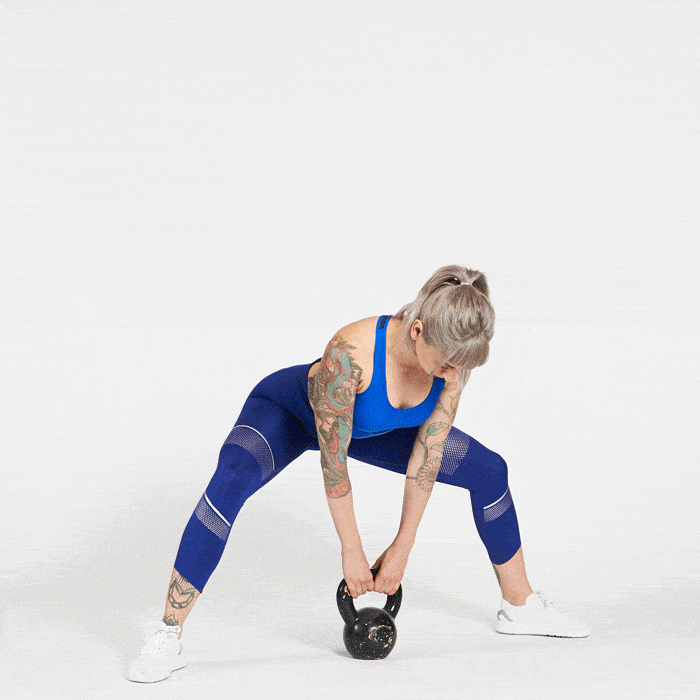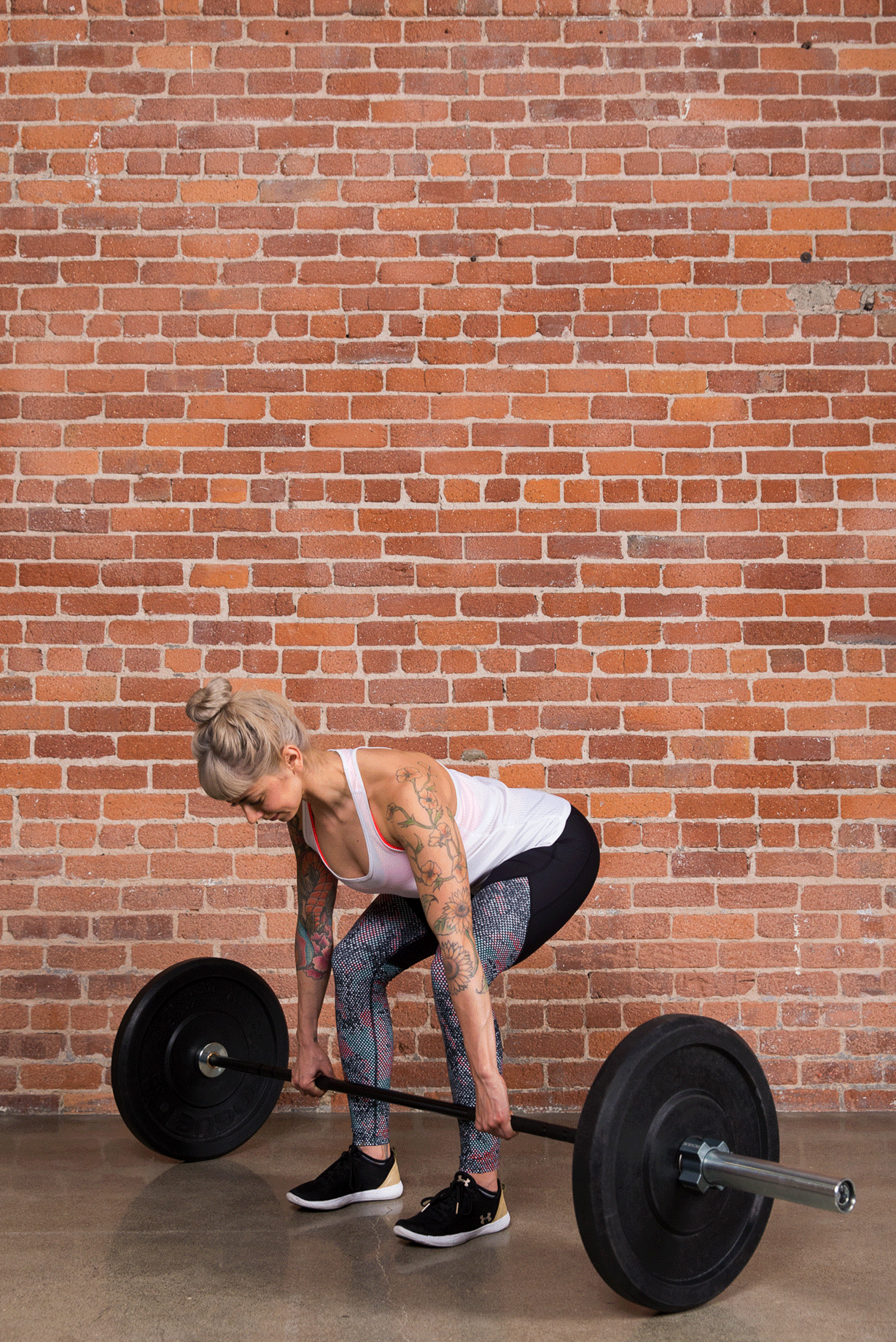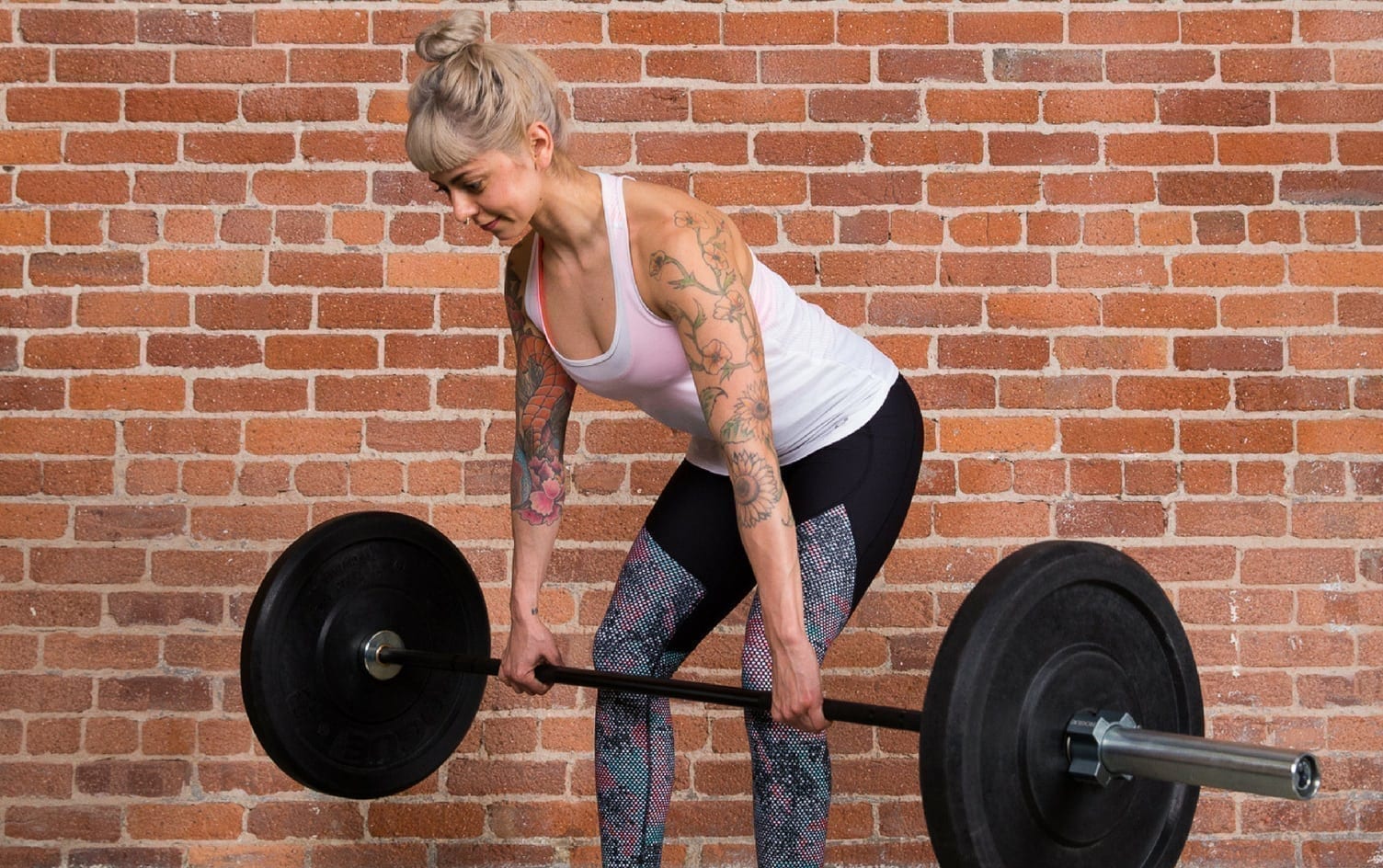If you’re into picking things up and putting them down, you need to know how to deadlift. Of all the fundamental strength-training movements, deadlifts are a lower-body pulling move that provides the most bang-for-your-buck when it comes to getting strong and building muscle.
Unfortunately, many gym goers avoid deadlifts because they seem intimidating — heck, the word “dead” is in the name. But with this how-to guide, you’ll learn to deadlift with pristine technique to ensure safe and steady strength gains.
DEADLIFT 101
The deadlift is best learned through progressions. We’ll start with the most basic movements and steadily progress to more advanced variations to help you get comfortable.

The first step to master the deadlift is learning to set up correctly, which requires you to hinge through the hips. The two most common mistakes during the deadlift setup are rounding the lower back and bending the knees too much.
First things first, deadlifts are not bad for your lower back if you do them correctly. Secondly, deadlifts are not squats, either. Enter the hip hinge. A proper hip hinge involves sitting the hips backward with a slight knee bend, which puts you in the ideal position to use your glutes, hamstrings and core to move the weight.

To groove this hip hinge pattern, try the wall hip hinge drill:
- Stand with your feet hip-width apart and your heels about a foot away from a wall.
- Place a small bench or hurdle over the middle of your feet, where your shoelaces would be.
- Bend at the knees slightly and puff your chest up without arching your lower back.
- Gradually sit your hips back and lower your torso toward the floor until your butt hits the wall. Don’t let your knees shift forward and hit the bench/hurdle. At this point, your hips should be higher than your knees.
- Return to the starting position by straightening your legs and squeezing your glutes.
A quick note: All hip hinge movements are best done with flat-soled shoes or no shoes at all. A heel-elevated shoe shifts the weight too far toward the toes, making it hard to hinge back into the glutes and hamstrings.


Now that you’re comfortable with the hip hinge, it’s time to add some weight. The sumo deadlift, using either a kettlebell or dumbbell, is the perfect way to introduce resistance to the hip hinge without jumping straight to a heavy barbell.
The movement is nearly identical to the aforementioned hip hinge (with a slightly wider stance), but you can skip the wall and the bench/hurdle.
- Stand over a kettlebell or dumbbell (standing on its end) with your feet just outside your hips with your toes turned out slightly.
- Perform the same hip hinge described above while reaching your arms straight down for the weight.
- If you can’t reach the weight without rounding your back, bend your knees slightly until you can reach it.
- Grab the kettlebell handle with an overhand grip, or cradle the dumbbell with your fingers underneath the head of the dumbbell.
- Take a big breath and brace your abs as if you were about to get punched.
- Stand up by pushing your feet down into the floor, making sure your chest and hips rise at the same rate.
- Squeeze your glutes at the top, and return the weight to the floor using the same hip hinge movement.

Once you’ve mastered your kettlebell or dumbbell sumo deadlifts, you might find you run out of weight quickly. Even smaller people can quickly exceed 100 pounds, which is the heaviest dumbbell or kettlebell you’ll find in many gyms. The next step is the trap bar deadlift.
The trap bar is a barbell with a frame you can stand inside, which keeps the hands by the sides and aligns the load with the lifter’s center of mass. This makes for a versatile deadlift variation that is friendly on the lower back. While trap bars aren’t a staple in every gym, they’re become easier to find as heavy strength training becomes less taboo. If you’re serious about getting strong and your gym doesn’t have a trap bar, consider finding a new gym!
- Stand with the same foot placement as the first hip hinge exercise, slightly narrower than the sumo deadlift.
- Perform the same hip hinge motion, only bending your knees as needed to reach the handles.
- Once you can reach the handles, grip them and tighten your lats by pushing your armpits down toward your hip pockets.
- Perform the same breathing technique and stand up just like you would for the sumo deadlift.


You can get incredibly strong with a trap bar deadlift. In fact, many people would do best sticking with the trap bar indefinitely. But if you want to move to the regular barbell, do so after mastering the trap bar.
The barbell deadlift (often called a conventional deadlift to differentiate it from the wider-stance sumo deadlift) is the gold standard for total-body strength. The main difference from the trap bar deadlift is that the weight is in front of your body, which requires a slightly different approach to ensure the bar doesn’t drift away from you while lifting it.
- Stand with the same foot placement as the trap bar deadlift, with your shins a few inches away from the bar. The bar should be right over your shoelaces.
- Hinge your hips back and let your knees bend slightly until your shins touch the bar. If you can’t reach the bar with a flat back once your shins are touching the bar, stand up, start with your shins further away from the bar and try again.
- Grab the bar with your hands just outside your hips, no wider. Your arms should hang straight down from your sides and you approach the bar.
- Pull the bar into your shins with straight arms and keep it there. Continue to actively pull the bar into your body as you stand up, and don’t let the bar lose contact from your body at any point during the lift.
- Breathe and stand up the same way you did during the trap bar deadlift.
- Once the bar is above your knees, push your hips forward and stand tall. Squeeze your glutes at the top to prevent arching your lower back.
- Return the bar to the floor by hinging your hips back and out of the way. If the bar hits the top of your knees on the way down, you’re not hinging back far enough.
COMMON PROBLEMS AND SOLUTIONS
Even after lots of practice, you may run into technique problems that prevent you from deadlifting properly. Here are a few solutions to common deadlift mistakes.

The number 1 reason you can’t keep your back flat during the deadlift is because the weight is too heavy. Start light and only add weight to the bar when you can keep perfect form.
Another reason a lifter might round his or her back is because they’re not able to reach the bar while keeping a flat back. Simply raising the height of the bar by elevating the weights on blocks or mats can make it easier to get into a proper starting position.

Pushing the knees out while deadlifting is important for activating the glutes and keeping your knees healthy. If your knees are caving in, you may simply be standing too wide. Move your feet in a bit and focus on pushing your knees out during the entire lift.
Placing a resistance band around your knees gives you immediate feedback on proper technique. If you forget to push your knees out, they cave in against the resistance of the band. Start with a light band; you don’t want a band that’s so heavy you can’t get into a good position.

It’s common during barbell deadlifts to see the bar drift away from the lifter’s body. If you don’t keep the bar in contact with your body, much of the stress goes to your lower back instead of your legs. Simply adding a pause to the exercise helps you stay in a good position. Perform your regular deadlift setup, but as you stand up, pause when the bar is at mid-shin height. This forces you to keep the bar tight to your body.
If pause deadlifts don’t do the trick, try band-distracted deadlifts. Loop one end of a resistance band around the middle of the bar and the other end around a stationary object like a squat rack. Place the bar far enough away from the anchor point to stretch the band, then perform your deadlifts as normal. The tension of the band pulls the bar away from you, forcing you to actively pull the bar into your body.
GET DOWN TO DEADLIFT
Don’t ditch your deadlifts just because they look scary. Follow these progressions step by step, and only add weight once you’ve mastered the technique. With patience and discipline, you’ll be picking things up and putting them down with the best of them.
READ MORE MASTER THE MOVE
> The Bench Press
> The Pistol Squat
> The Burpee
> The Pushup
> The Pullup




